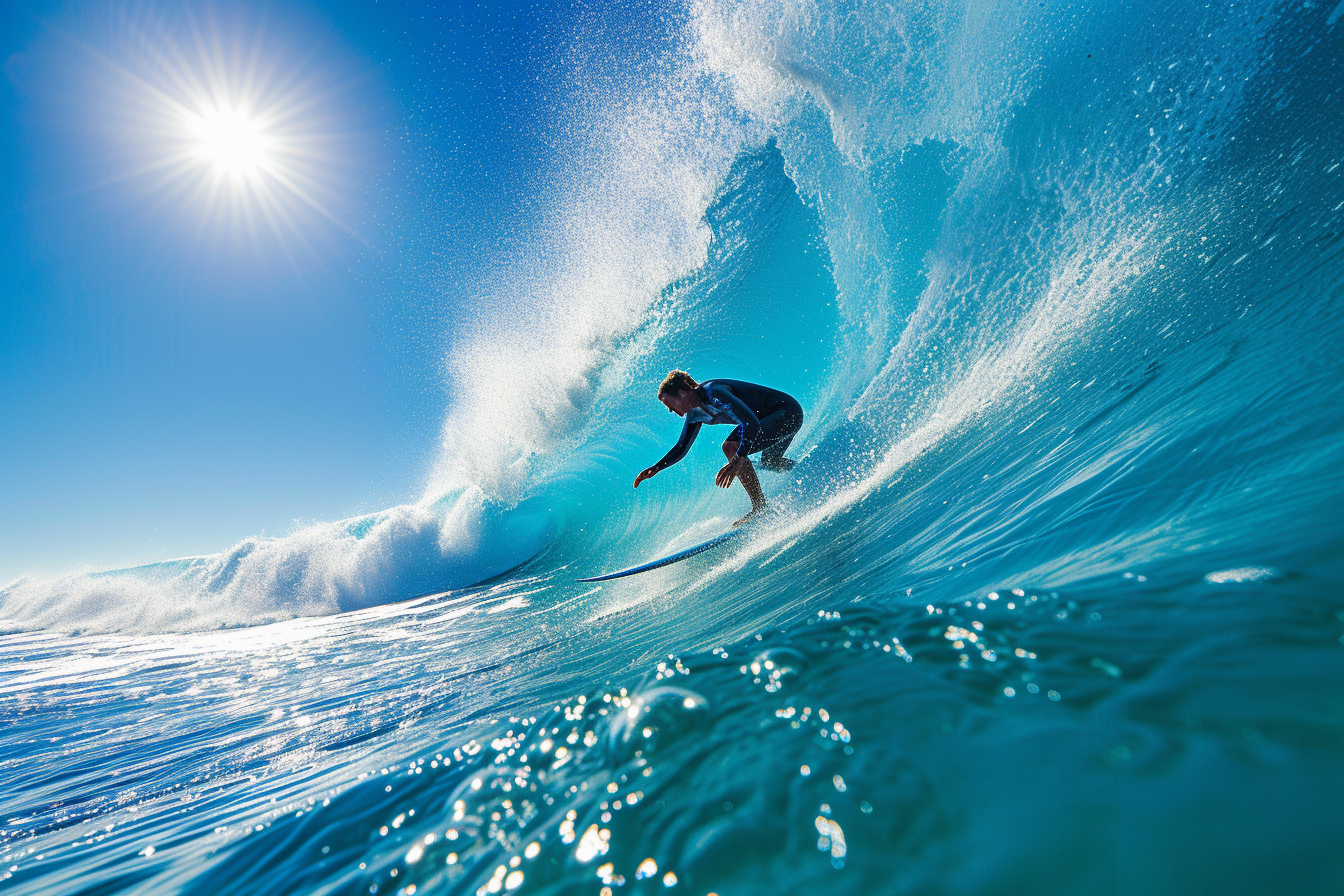Surfing is not merely a sport; it’s a dance with the ocean’s rhythm. For many, the very thought of gliding along a wave’s crest, propelled by nature’s pulse, ignites a thrill unmatched by any other pursuit. If you’re new to the tableau of surfing, the adventure ahead is both exhilarating and demanding. This guide presents key insights and tips to help novices navigate the intricacies of catching their first wave.
Understanding the basics
Know the Equipment
Before you venture into the saltwater arena, familiarize yourself with the fundamental surfing equipment.
- The Surfboard: Your choice of board is pivotal. As a beginner, opt for a larger, thicker, and wider board. These are more stable and buoyant, making it easier for you to find your balance and catch waves.
- The Leash: This is a cord that connects you to your board. It ensures that your board doesn’t stray far if you fall off.
- Wax: Surfboard wax provides grip for your feet. Apply it to the area where you will be standing.
- Wetsuit: Depending on the water temperature, a wetsuit can be essential. It provides warmth and offers some protection against scrapes and stings.
Selecting the Right Spot
Beginners should start at beaches that are known for gentle waves and less crowded line-ups. Soft rolling waves are ideal for learning the basics. Research and consult local surf shops for advice on the most suitable spots for novices.
Surf Etiquette
Respect is fundamental in the surfing community. Understanding the right of way, not dropping in on someone else’s wave, and not snaking (cutting someone off to catch a wave) are crucial commences of surf etiquette. By abiding by these unwritten rules, you maintain harmony in the water.
Physical preparation and safety
Swimming Prowess
Proficiency in swimming is a non-negotiable aspect of surfing. Ensure you can swim comfortably in open water. It’s about building stamina and confidence in the sea, where currents and waves can test your abilities.
Stretching and Balance
Developing flexibility through stretching can significantly enhance your performance. Yoga and balance-focused exercises are fantastic for improving your core strength and balance, key elements for surfing success.
Understanding the Ocean
Grasp the fundamentals of oceanography, particularly how currents, tides, and waves behave. Being able to read the ocean helps avoid potential dangers and aligns you with ideal conditions to catch your first wave.
The fundamentals of surfing technique
paddling
Paddling demands a combination of strength and technique. Keep your body centered on the board with your feet together and your hands cupping the water. Propel yourself with deep, smooth strokes.
The pop-up
The "pop-up" is your transition from paddling to standing. Here’s a breakdown:
- Lie flat on your board with hands by your ribs, not too far forward, to prevent nosediving.
- In one swift motion, push your upper body up and bring your feet underneath you, placing them where your hands were.
- Stand with knees slightly bent and arms out for balance. Your first inclination might be to look down at the board, but it’s essential to maintain a focus on the horizon for balance.
Stance and balance
Your stance is integral to maintaining balance. The ‘regular stance’ means your left foot is at the front of the board, and the ‘goofy stance’ means the right foot leads. Stand with a broad base, distribute your weight evenly, and keep low with flexible knees.
Catching your first wave
Starting in the Whitewater
Beginners will find their initial wave-catching moments in the frothy after-section of a wave, known as the whitewater. It’s slower, less powerful, and provides a steady impetus for practicing the pop-up.
Timing and Positioning
As the whitewater approaches, paddle hard, and as you feel the wave’s momentum grab your board, execute the pop-up. Timing is everything. Too early, and the wave will pass beneath you; too late, and it might result in a wipeout.
Look Where You Want to Go
Your body follows your head, so always look in the direction you want to surf. Focusing on your target path will naturally align your body posture to facilitate balance and direction.
Continuous development
Practice consistency
Like most sports, consistent practice defines progression in surfing. Make attempts to surf regularly, even if it’s just practicing paddling and pop-ups on the beach.
Learn from feedback
Every wave offers a lesson. Reflect on what worked and what didn’t after each attempt. Constructive self-criticism accelerates your learning curve.
Take lessons or attend a surf camp
Professional guidance from surfing lessons or attending a surf camp can be invaluable. Experienced instructors provide personalized feedback and refine your technique.
Being part of the surfing community

Engage with the local surfing community. Veterans are often font of wisdom and inclined to share stories, tips, and camaraderie with those new to the surfing world. In addition, respect the locals, the environment, and the essence of surfing culture. You’ll not only gain friends but also enrich your surfing experience.
Embarking on your surfing journey is a passage filled with challenges, excitement, and profound rewards. Harness the power of patience as you embrace the learning process. Every wipeout brings wisdom, and every ride cultivates a deeper connection with the ocean. Remember, the first wave you catch may not be perfect, but the sensation of riding upon the sea’s fleeting energy is an unparalleled introduction into the world of surfing. Keep focused, stay committed, and let the waves guide your path to surfing prowess.

